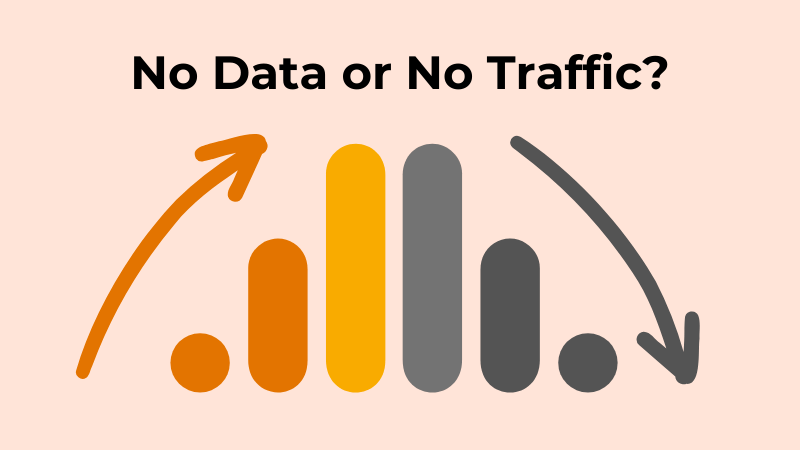If your Google Analytics 4 (GA4) isn’t showing data, try not to panic. You’re far from the only one experiencing issues. This article will show you how to fix common data tracking problems in GA4.
It might be that your GA4 data is completely missing, or you’ve noticed an awol KPI, such as conversions or revenue. Or perhaps the numbers simply aren’t adding up: your traffic isn’t what it should be, or you know as a fact you have more conversions than GA4 is letting on.
These kinds of problems could be down to a number of causes. And they aren’t uncommon: many GA4 users, experts included, are facing teething issues while navigating GA4.
The good news is, whatever problem you’re facing, someone else has come across it and troubleshooted it before.
This guide will take you step-by-step through the process of working out what’s gone wrong when your Google Analytics isn’t showing data — and how to fix it.
GA4 configuration issues
Firstly, it’s possible that data anomalies are present due to missteps during GA4’s setup.
GA4 is a complex piece of software that’s been many years in the making. With greater capabilities than its predecessor, Universal Analytics (UA), GA4 also comes with greater complexity, meaning more scope for things to go amiss.
You may notice inaccuracies in the data, such as a disparity in traffic numbers compared to UA, the absence of conversion data when you’re certain about a specific number of sales or new leads, or even entirely omitted metrics.
Check you haven’t set up filters that are impacting your reports
GA4 has data filter options, which allow you to include or exclude data based upon chosen variables.
If you have filters set up in GA4, they may impact the data in your report by filtering out the traffic you want to monitor.
To check if you have active data filters, go to Admin at the bottom of the left-hand side menu and select the ‘All Filters’ tab. Here, you’ll see if you have any filters set up that are potentially causing issues.
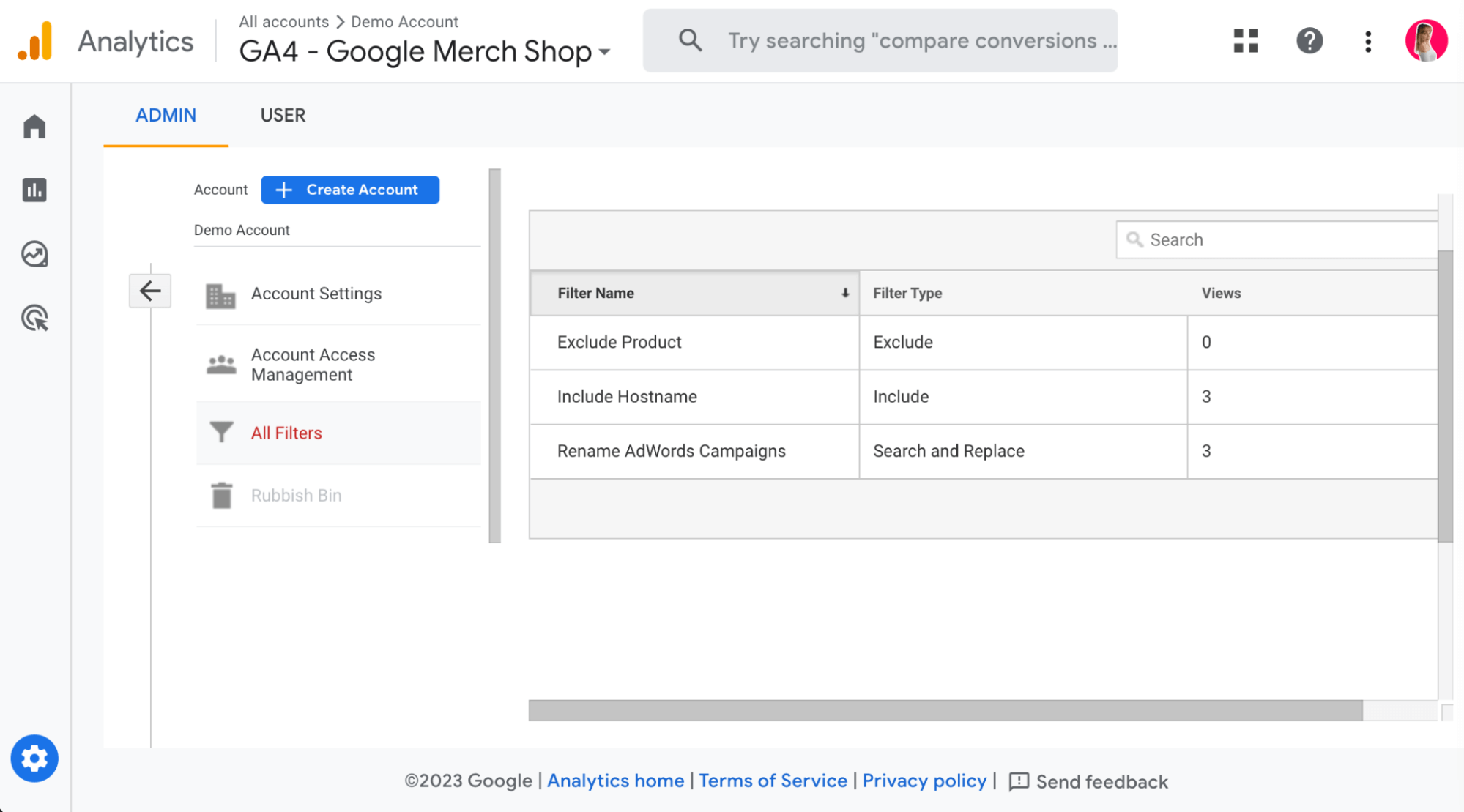
Now you’ve seen the filters you currently have in place, here’s the process for removing them if you don’t need them:
- Back on the main Admin page, click the
Data Settingsdropdown in the right-hand side menu and selectData Filters.
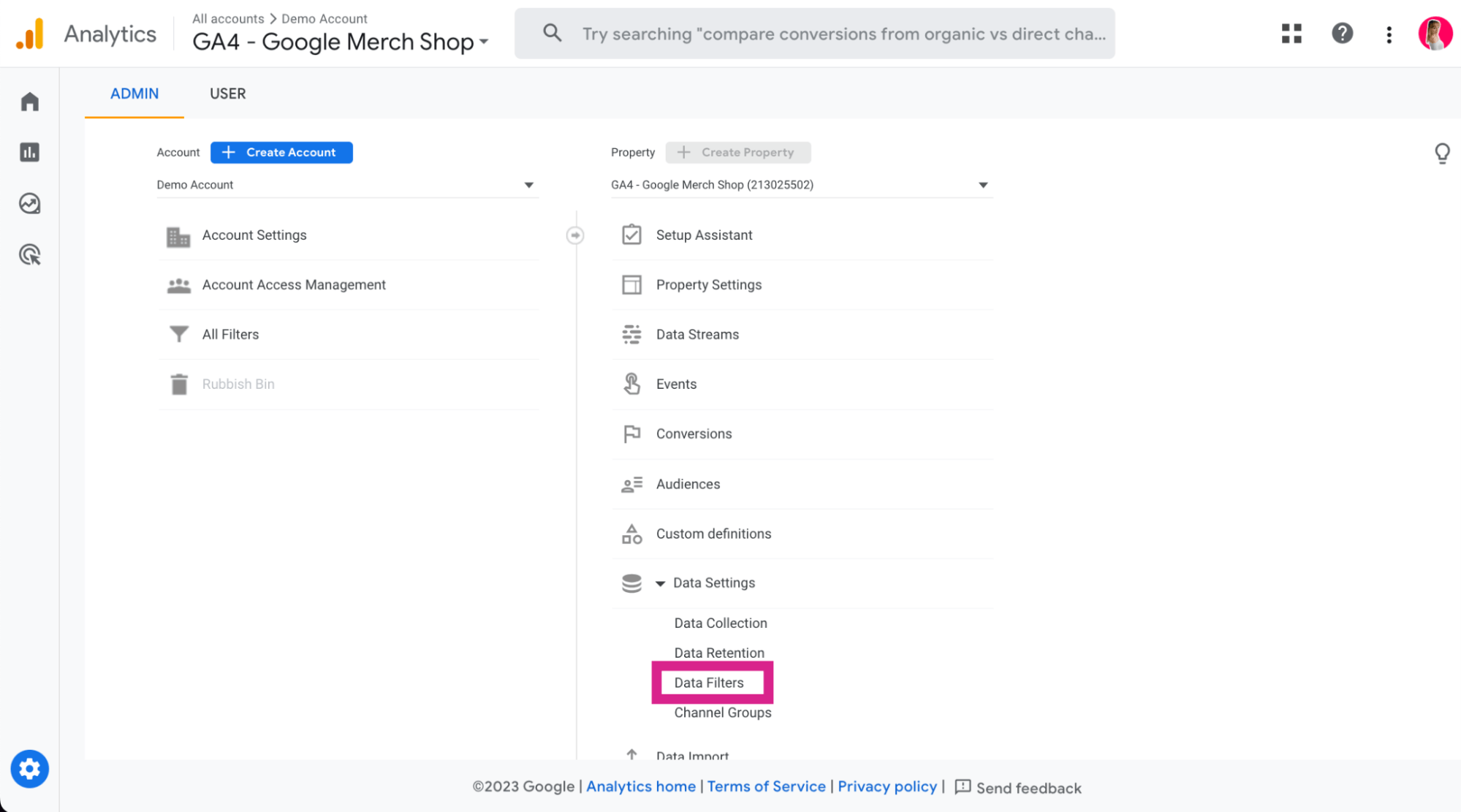
- On the next page, click on the filter you want to remove.

- On the following page, scroll to the bottom and toggle the
Inactivefilter state.
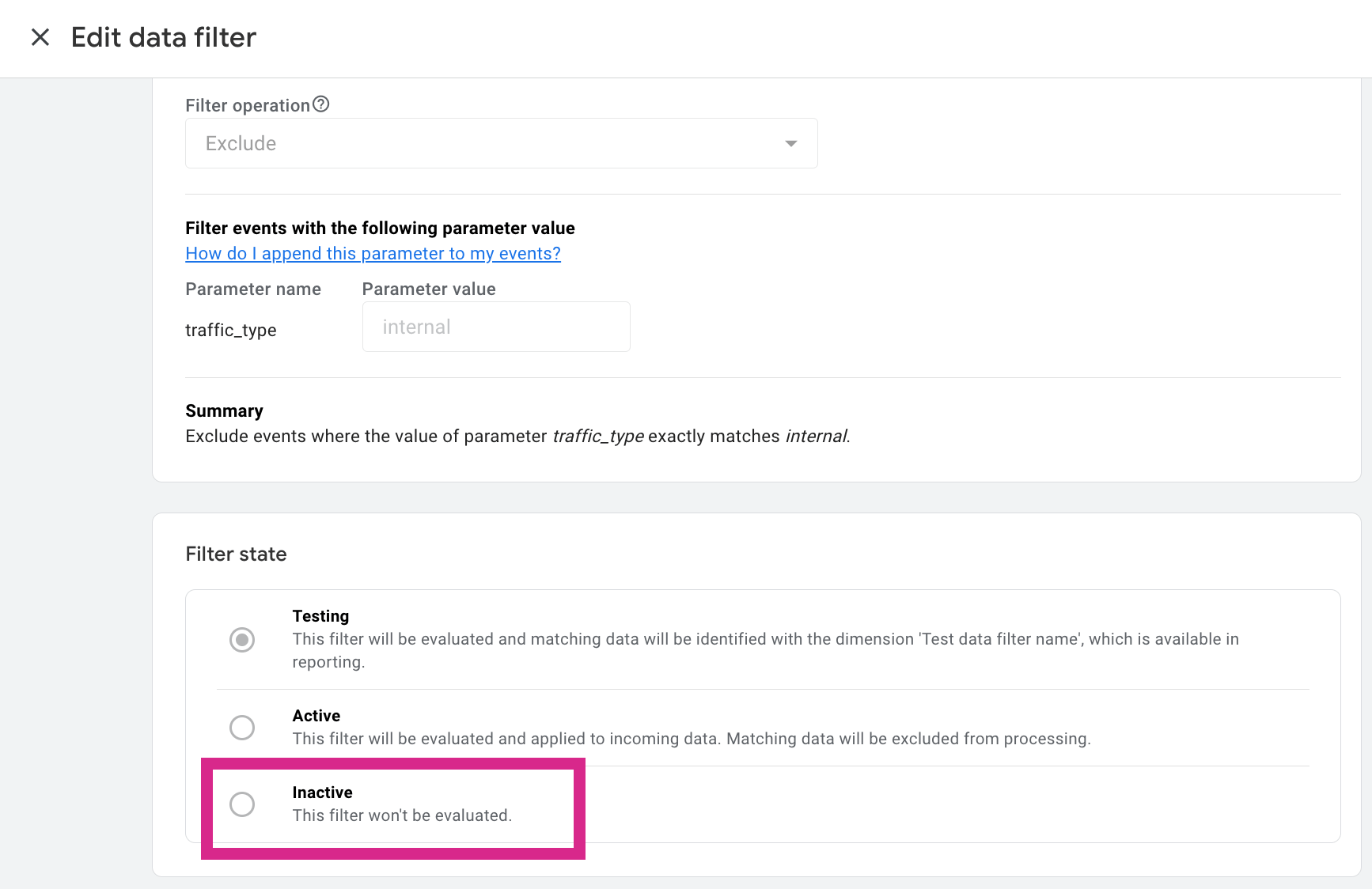
You can now go back to your main GA4 dashboard and reports to see if traffic is showing up correctly.
Check if a threshold is in place
Internet browsers and analytics software are introducing measures to protect individuals’ browsing rights, striking a balance between privacy and accurate tracking via machine learning. One example of how Google is protecting user privacy is its introduction of thresholds in GA4.
When a website doesn’t receive a lot of traffic, GA4 can apply thresholds to protect the anonymity of individual users. By introducing a threshold to hide small amounts of traffic data, it becomes impossible to use GA4 to identify an individual based on demographics, interests or any other differentiator.
So, how do you check if thresholds are in place and if they’re interfering with your data?
You can see if a threshold has been applied at the top of any GA4 report. When a threshold is active, the data indicator icon changes colour, from a green tick to an orange exclamation mark. When you click the icon, you’ll see a message stating that thresholding has been applied.
Here’s the process to remove thresholds if you need to:
- Navigate to the Admin page and select ‘Data Collections’ under ‘Data Settings’ in the right-hand side menu.
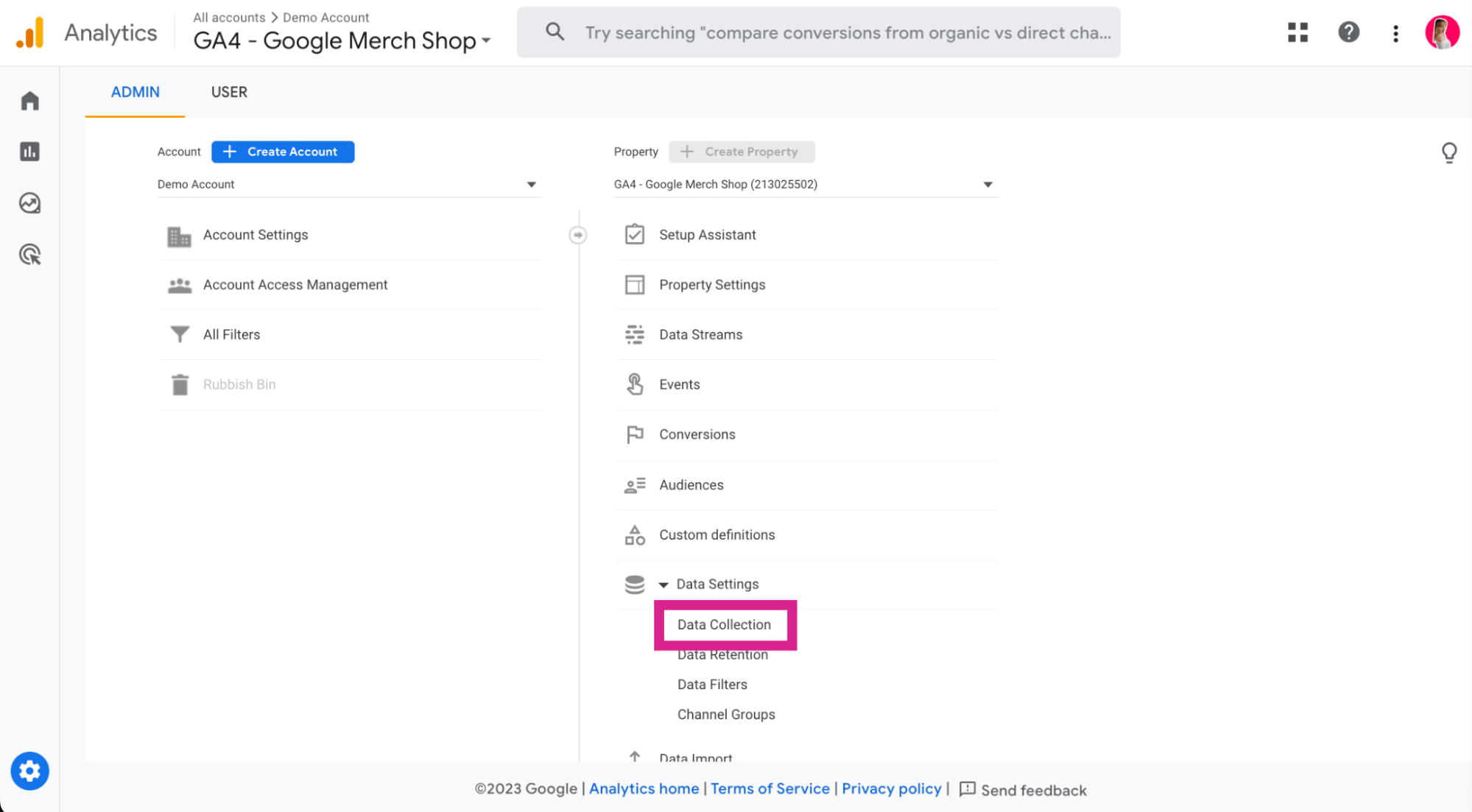
- Locate the toggle button next to ‘Include Google signals in reporting identity’ and switch it off.
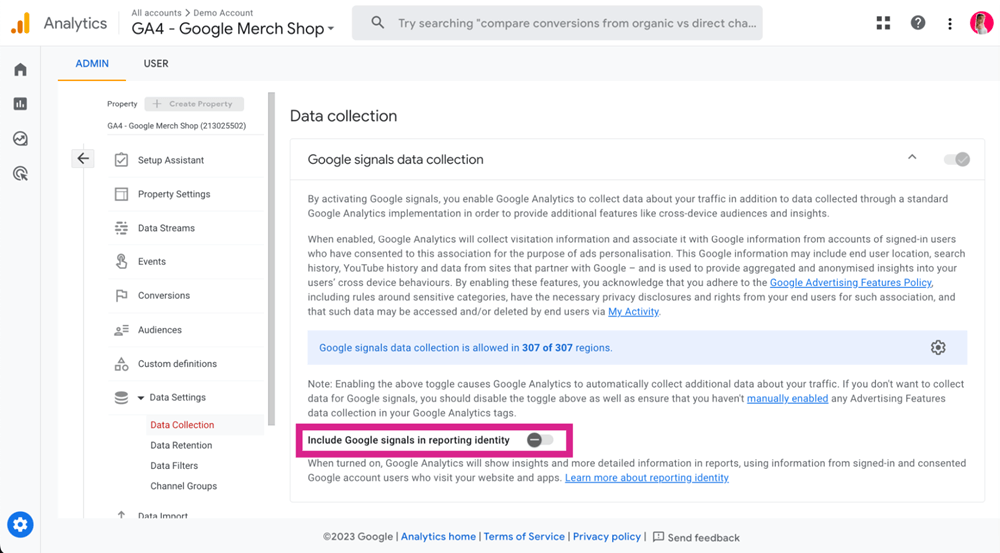
Ensure conversions are set up correctly
If GA4 shows 0 conversions, but you know you have received them, it could be that your conversions aren’t set up correctly.
In GA4, events need to be toggled as conversions for them to show up in your reports.
To check whether your events are also listed as conversions, go to GA4’s Admin page and click ‘Events’ on the right-hand side. You’ll see a list of all the events GA4 is tracking, including whether they’re a conversion.
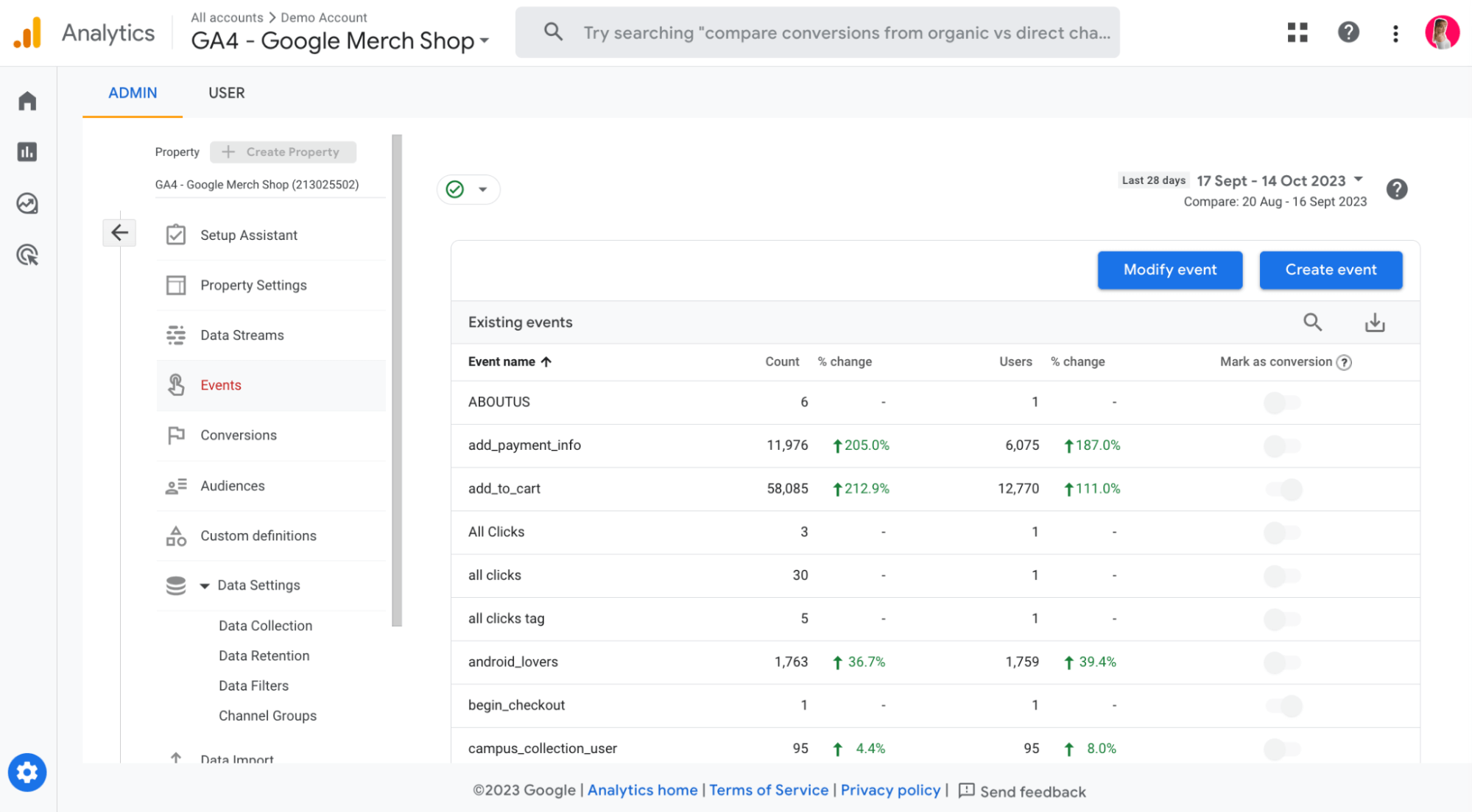
If any of this is incorrect and you want an event to become a conversion (or not be a conversion anymore), you can do this by switching the toggle under the Mark as conversion column.
Script execution issues
If you’ve checked that your GA4 configuration is set up correctly and nothing seems amiss, yet your data still isn’t showing, it might be time to delve into the more technical realm of coding.
Script issues can significantly impact data tracking in GA4, so it’s important to ensure the script is executed correctly across your website and for different browsers.
The easiest way to assess if something’s wrong with the code is to head to Google Tag Assistant and enter the domain you want to check.
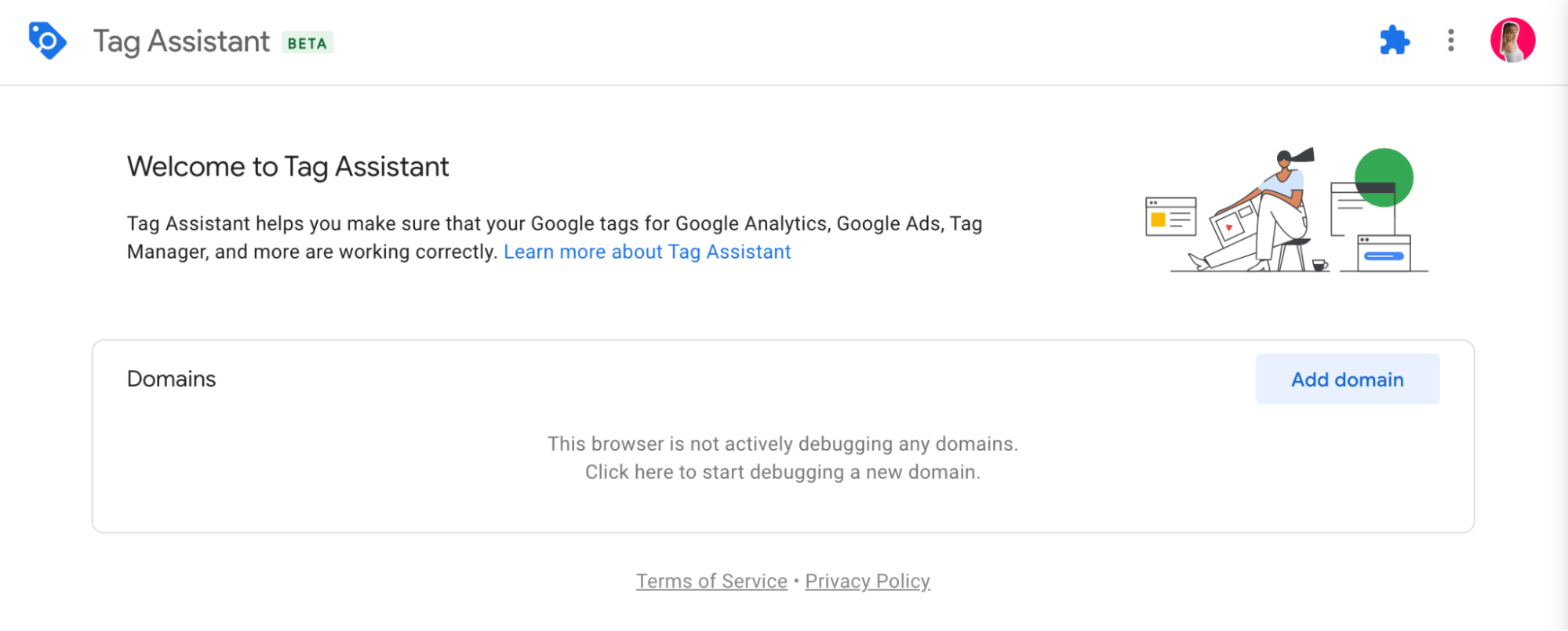
From there, Tag Asssistant will open a new debug UI window detailing the tag status across your domain, including tags fired and what data is being processed.
Below, we’ve indicated two of the main fixes you can explore once you’ve identified the code you need to fix via Tag Assistant.
Check the tracking code syntax for typos
A single, minute typo in the code syntax can sabotage your entire GA4 tracking.
Review the code for errors, including tiny white spaces, commas or other stealthy yet damaging letters, numbers or symbols. Identify and fix any errors, then test the webpage again to see if the problem is resolved.
Make sure you don’t have multiple tracking codes in place
Multiple tracking codes on a webpage can lead to vast anomalies in your GA4 data, swelling and distorting key reporting metrics.
It’s important to only use the tracking code related to your property. You can cross-check this in the Google Tag Assistant Report.
Website issues
If your Google Analytics isn’t showing data, the problem might not lie with GA4 or script issues at all. It may be an issue with your website.
The issue here isn’t that GA4 is malfunctioning; it’s that your website isn’t optimised for SEO properly and therefore receives little or no traffic.
Here, there are two possibilities. Firstly, your website may be badly SEO-optimised, so isn’t under Google’s radar to rank for keywords in search results. Secondly, Google may have crawled and blacklisted your website for so-called ‘black hat’ techniques.
Let’s identify which camp you fall into and how to address each.
Ensure your website isn’t being penalised by Google
If Google is penalising your website, people won’t find you in search results. Failure to abide by the Google Search Essentials guidelines can result in plummeting to the bottom of search engine results pages (SERPs) for any or all of your web pages. And this can happen literally overnight.
Needless to say, it’s crucial to follow Google’s guidelines. But if you do slip up, here’s what you can do to fix it.
Firstly, head over to the Google Manual Actions Report to see if your site has manual actions issued against it. If it has, the report will show you what penalties have been issued against it, when and why.
Once you’ve identified the problem, take the following steps to fix it:
- In the Manual Actions Report, click ‘Learn more’ next to the action to discover information on the next steps to fix the issue. You must go through and fix issues on all affected pages.
- Be sure that Google can crawl your pages. This means ensuring they’re not locked behind a login or paywall and are not blocked by robots.txt. You can use Google’s URL Inspection Tool to check your page is indexable.
- Once you’ve fixed all the issues in the Manual Actions Report and have checked that all pages are indexable, select
Request Reviewin the report. In your request, describe the fixes you’ve made, including step-by-step actions taken and documentation of the outcomes. - Once your review request is submitted, Google will update you on its progress via email. Be patient, as this process can take some time: anything between a few days and several weeks.
Make sure your website is SEO-optimised
If your website isn’t blacklisted by Google, then it’s possible that it’s simply not well-optimised for SEO.
Optimising your website to target relevant keywords and meet the search intent of your audience is essential to appear in Google SERPs and attract traffic. If you don’t create your website with SEO best practices in mind, it’s unlikely that you’ll see much, if any, traffic. This could account for the lack of data in GA4.
There are buckets of tools out there to analyse how well your website is optimised for SEO. However, the most straightforward (and free) option is Google Search Console (GSC).
In GSC, click the ‘Search results’ tab on the left to see a dashboard with a whole host of data around the queries and pages you currently rank for on Google. Or, perhaps no data at all if your website isn’t optimised properly!
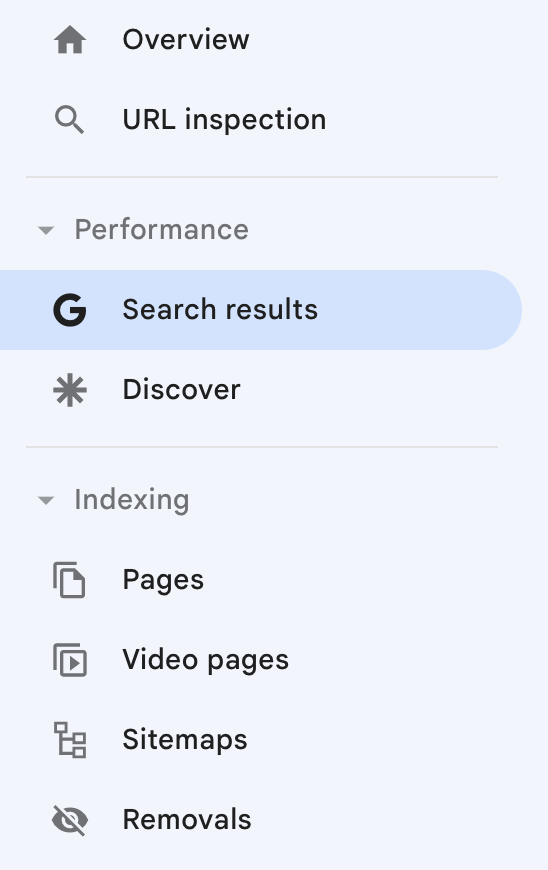
If you aren’t seeing many, if any, keyword rankings, how can you fix this?
While there are no overnight fixes with SEO, and it’s a meaty topic — extending beyond the scope of this article — here’s a breakdown of the fundamentals you need to consider if you want to succeed in SERPs:
- Keyword targeting: Are you targeting relevant keywords and placing them appropriately within the onsite copy, blog content, H-tags, URLs, alt text and metadata — and without keyword stuffing?
- Search intent: Does your page meet the search intent (i.e. the user’s expectation) of the keyword you’re targeting? Does it answer the user’s question or provide them with the type of information and content they’re looking for?
- Cross-linking: Are you correctly implementing cross-linking to guide users and Google crawlers to all your web pages?
- User experience (UX): Is your UX up to scratch, making your website easy to read and navigate? This includes considering the placement of headers, text, imagery, videos, menu bars, dropdowns and more.
- Quality content: Is your content unique, helpful, valuable and not plagiarised?
- Backlinks: Are you building backlinks to your website, without using black hat techniques? Are your backlinks from legitimate, reputable sources with a high domain authority?
- Sitemap: Have you added your sitemap for indexing to Google Search Console?
Remember that SEO is an ongoing, long-term commitment. Like a garden, you need to continually nurture and tend to your website SEO for it to grow. Follow SEO best practices, and you’ll see the benefit of your efforts — but even then, it will likely be a few months of patiently implementing, analysing and refining your SEO strategy.
Adblockers removing traffic data
Nowadays, most Adblockers have the option to block GA4 and reject non-essential cookies.
It’s safe to assume that the majority of users will have an adblocker installed, tampering with Google tracking abilities. So, this section is a must for all website owners to consider!
No Cookie Banners. Resilient against AdBlockers.
Try Wide Angle Analytics!
Utilise Consent Mode
Consent Mode is an option in GA4 allowing you to glean data insights while keeping user browsing privacy intact.
Consent mode communicates website visitors’ cookie or app consent status to Google, allowing Google tags to adjust behaviour depending on their consent choices. Using machine learning, Google establishes the behaviour of website visitors based on the insights it has from those who accept cookies.
To activate Consent Mode, first go to Google Tag Manager (GTM), then:
- Go to the Tags window and select the GA4 configuration tag.
- Select
Tag Configurationand navigate toAdvanced Settings. - Now, select
Consent Settings. From here, you can define the consent settings to ask website visitors.
Implement server-side tracking
Most Adblockers blacklist GA4 by default. A workaround for this is to implement GA4 using server-side tracking. Server-side tracking inhibits Adblockers by sending data to a server, which then passes the information onto GA4, bypassing any adblocker restrictions.
This route is intricate and complex, so we’d only recommend implementing this if you’re extremely tech-savvy. Google has provided an extensive guide on how to set up server-side tracking here.
Staying calm in the face of GA4 data disparities
Encountering hiccups with GA4 is far from uncommon. Many seasoned analytics experts have faced similar challenges during GA4’s rollout.
If your Google Analytics isn’t showing data correctly, this guide has equipped you with the tools and know-how to tackle common issues head-on, ensuring your data flows seamlessly once more.
Or, you may wish to explore the whole host of GA4 alternatives out there if you seek an easy-to-use, accurate and privacy-compliant option.
Whichever direction you go down, the most important thing to remember when your GA4 isn’t showing data correctly is to not panic. A solution is out there and you’ll soon be back on track with accurate data to guide your decisions and strategies effectively.
Lauren Meredith is a seasoned content marketing strategist and writer helping online businesses connect with their audience and maximise organic success. Her SEO content secures #1 positions on Google, features in publications such as The Independent, Yahoo and academic domains, and has won an award at the Digital Growth Awards.
